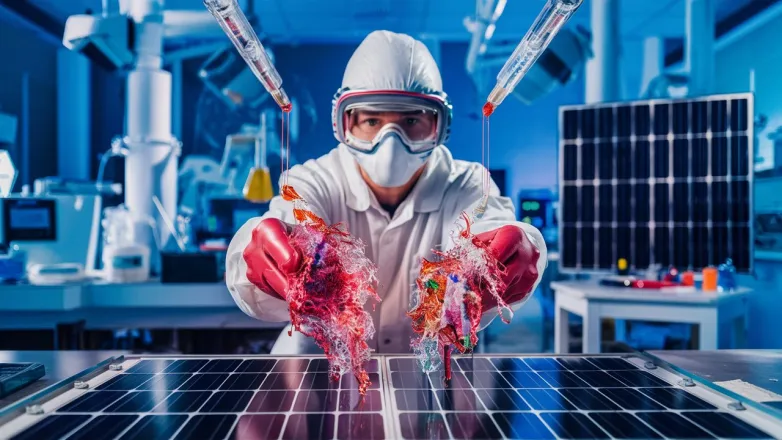Revolutionary Two-Step Process Boosts Perovskite Solar Cell Efficiency
- Revolutionary two-step evaporation and inkjet process for perovskite solar cells achieves high efficiency and scalability, paving the way for future advancements in solar technology.

Researchers from Germany's Karlsruhe Institute of Technology (KIT) have developed a scalable two-step evaporation and inkjet process for perovskite thin-film solar cells, achieving champion cells with the same efficiencies as those made with the spin coating process. The technique combines an evaporated lead iodide layer with inkjet-printed organic perovskite precursor materials, providing high reproducibility and potential for conformal growth on textured silicon.
The team used a Pixdro LP50 inkjet printer with a Sapphire QS-256/10 AAA print head, which has 16 times more nozzles than typical print heads, to deposit the films. By optimizing printing parameters, they achieved champion devices with an efficiency of 18.2%, on par with spin-coated counterparts. The scientists will now focus on integrating the process into the fabrication of tandem and large area devices.
How did German researchers achieve high-efficiency perovskite solar cells?
- The researchers from KIT developed a scalable two-step evaporation and inkjet process for perovskite thin-film solar cells.
- The technique combines an evaporated lead iodide layer with inkjet-printed organic perovskite precursor materials.
- The team used a Pixdro LP50 inkjet printer with a Sapphire QS-256/10 AAA print head, which has 16 times more nozzles than typical print heads.
- By optimizing printing parameters, they achieved champion devices with an efficiency of 18.2%, on par with spin-coated counterparts.
- The process provides high reproducibility and potential for conformal growth on textured silicon.
- The scientists will now focus on integrating the process into the fabrication of tandem and large area devices.
Also read

